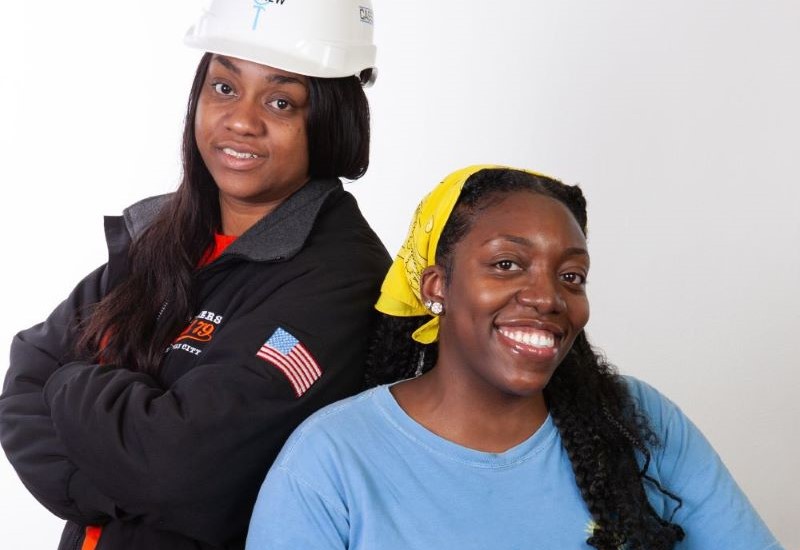Apprenticeship creates a promising pathway to skilled jobs for women, especially women of color, that combines on-the-job learning with related classroom instruction using an “earn and learn” model. Ninety percent of apprentices retain employment after completing an apprenticeship, with an average starting salary of $80,000. The lifetime earning advantage of apprenticeships is estimated to be at least $300,000.
Letoya Washington, a graduate of Nontraditional Employment for Women’s pre-apprenticeship program in New York, had this to say: “As a teen mom, I needed a job that would allow me to provide for my family. An apprenticeship in the trades gave me exactly that. I came for the money but stayed for the career. I also gained leadership opportunities in my union and was even able to buy my first home before age 30.”

Despite the advantages of apprenticeship, women only make up about 14% of active apprentices due to many of the same barriers that limit them in the labor market more generally – for example, disproportionate caregiving responsibilities, lack of child care and discrimination both during and after hiring. Moreover, many apprenticeships are concentrated in male-dominated fields that have higher rates of reported sexual harassment. While many industries have made strides, gender- and racial-based discrimination, harassment and even violence remain concerns.
Learn about strategies for overcoming barriers to women’s employment in nontraditional fields.
But for those who enter an apprenticeship, particularly in high-paying fields such as the building trades, the benefits are often dramatic. Another Nontraditional Employment Women's program graduate, Racquel Hazlewood, found that, "Once I completed my pre-apprenticeship and began my career as an apprentice electrician, I could see the difference in my work ethic and skills. It also provided growth, guaranteed opportunities, community and a support system – things I did not have in my previous customer service job."
Letoya and Racquel are two of the growing number of Black women prepared for apprenticeships in the U.S. In fact, the number of Black women in apprenticeship programs has more than tripled since 2014, the earliest year for which data are available, increasing from 7,586 to 24,620.

This growth reflects a broader pattern of more women entering apprenticeship programs. The overall number of women who are active apprentices or who recently completed an apprenticeship program has grown from 33,500 in 2014 to 109,000 in 2023.
This is good news for women’s earnings. Data confirm that new female apprentices earn more than comparable non-apprentices. Black women who have recently completed an apprenticeship program earn $840 a week for full-time work, on average, while Black women with a high school diploma but no apprenticeship completion earn $697 a week. This is a 21% difference in pay and adds up to an almost $7,500 annual wage advantage for apprenticeship completers.
Many Black female apprentices are making the move into male-dominated fields. While the largest share of Black female apprentices work as nurse assistants, the most recent data indicate that two of the top five occupations of Black female apprentices include heavy truck driver and electrician.

Women’s entry into these types of nontraditional, historically male-dominated occupations can serve as a pathway to higher earnings and better financial security. To help more women of all races and ethnicities move into these higher-paying positions, the Women’s Bureau has awarded over $20 million through the Women in Apprenticeship and Nontraditional Occupations (WANTO) grant program since 2017. WANTO awardees have helped over 11,000 women for careers in nontraditional fields like construction, advanced manufacturing, energy, technology and transportation provided ongoing trainings for employers and unions on creating a more supportive environment and culture.
The results of the WANTO program underscore what thousands of women like Racquel and Letoya already know: That with the right structural supports, apprenticeship can be a pathway to financial and career success. Let’s keep working to encourage inclusive training programs and worksites and eliminate discrimination so that every worker has a chance to succeed.
Georgia Poyatzis is an Economist at the Women’s Bureau. Gretchen Livingston is a Survey Statistician at the Women’s Bureau.

 U.S. Department of Labor Blog
U.S. Department of Labor Blog